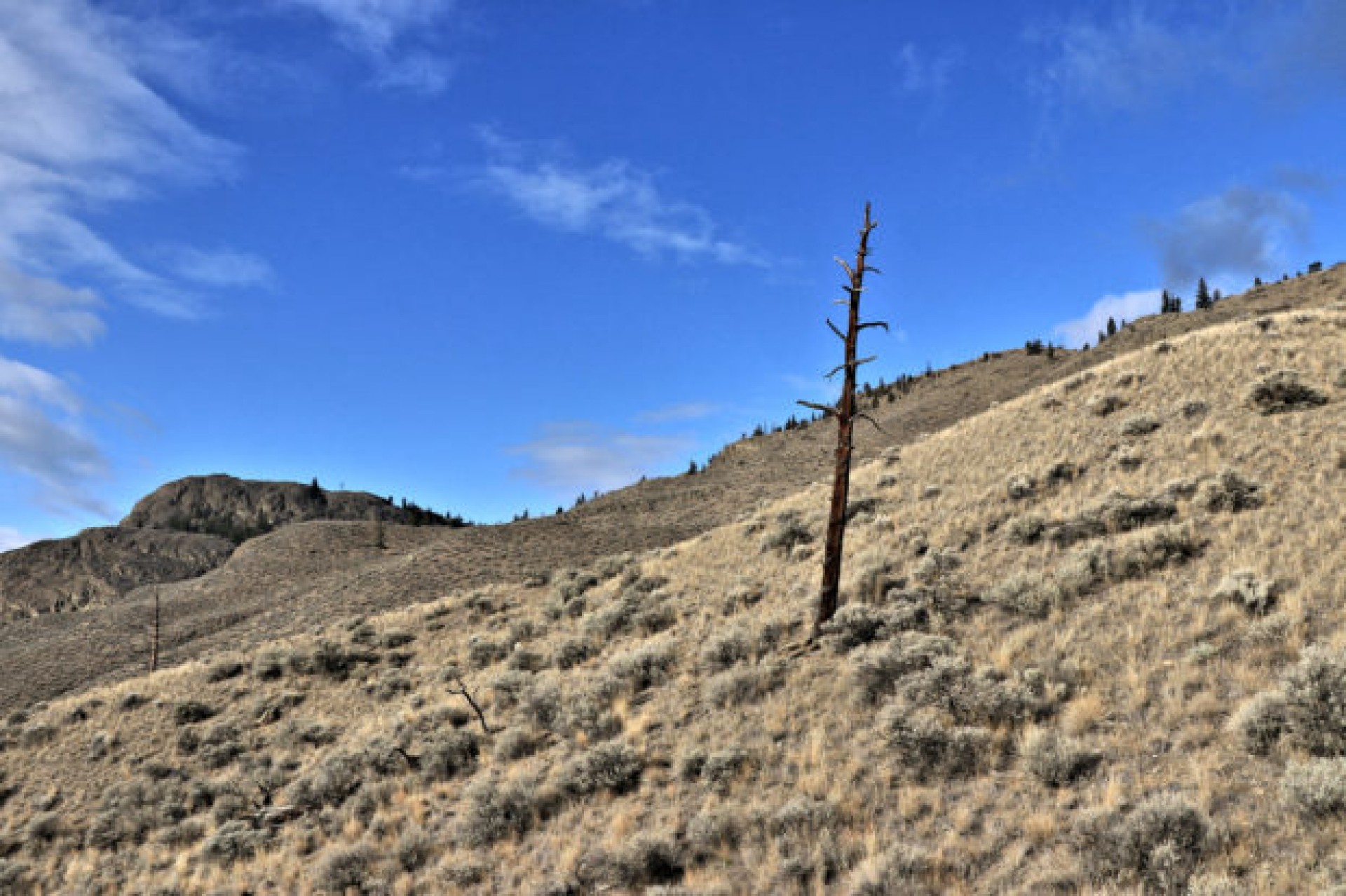
Tranquille Hills Fossil Beds – Kamloops Trails
There have been 5 Ice Ages spanning the last 2000 million years. In that span there were many geological events too, with folding, faulting, and volcanic activity changing the landscape. A number of volcanic events shaped the hills around Kamloops Lake, but the glaciers of the ice age also shaped the land. During the last Ice Age which started 2.5 million years ago and “ended” about 12 000 years ago, and likely similar events from earlier ice ages, an ice dam formed in the Thompson River Valley and a glacial lake rose behind it. The hills surrounding Kamloops Lake and the Thompson River Valley were under water and erosion carried glacial silts downhill to the lake from the surrounding hills. Over time, compaction resulted in the formation of shales and mudstone, some of which contained organic materials. The lower layers of the shales are the older deposits, so when we do some minor excavation in the hills between Tranquille and Battle Bluff, we can find thin layers of sedimentary rock with a variety of fossils in them. The area is rich in plant fossils, but the hills are covered in ages of muds, silts, gravels, and clay washed down from the hills above so much of the shale is covered up. Only by exploring steep gullies where the rushing spring meltwaters clear the banks can we easily find fossils. We hiked across the hills to find these spots.





A total of about 30 fossils were set aside for viewing. Some of the other impressions were branches, burned wood, wood fragments, leaves, and small organic fragments. We also found mudstones shaped by water into mini-dunes, wave patterns, and water-drip concretions.
No explanation of the exact location is provided here, nor will there be. There are numerous potential sites in the Tranquille Hills. Look for shale slopes near gullies or on the downslopes where water drains to seasonal streams, into the river or toward the the lake. Where sedimentary layers have been exposed, fossils may be present.
Doug Smith
Doug writes for Kamloops Trails, a not-for-profit (and ad free) website, offering information on trails, waterways, routes, featured spots, viewpoints, and explorations in the outdoors in the Kamloops area (and beyond).
Doug started exploring this area in 1976 and continues to follow tracks and routes wherever they lead, with the aid of map, compass, GPSr and camera. After many dead-ends, but also many discoveries, he chose to share this information.
The Kamloops Trails website has a massive number of interesting posts and would be of interest to anyone in Kamloops who enjoys the outdoors. Visit the Kamloops Trails website at: http://www.kamloopstrails.ca/
My Blog Posts
